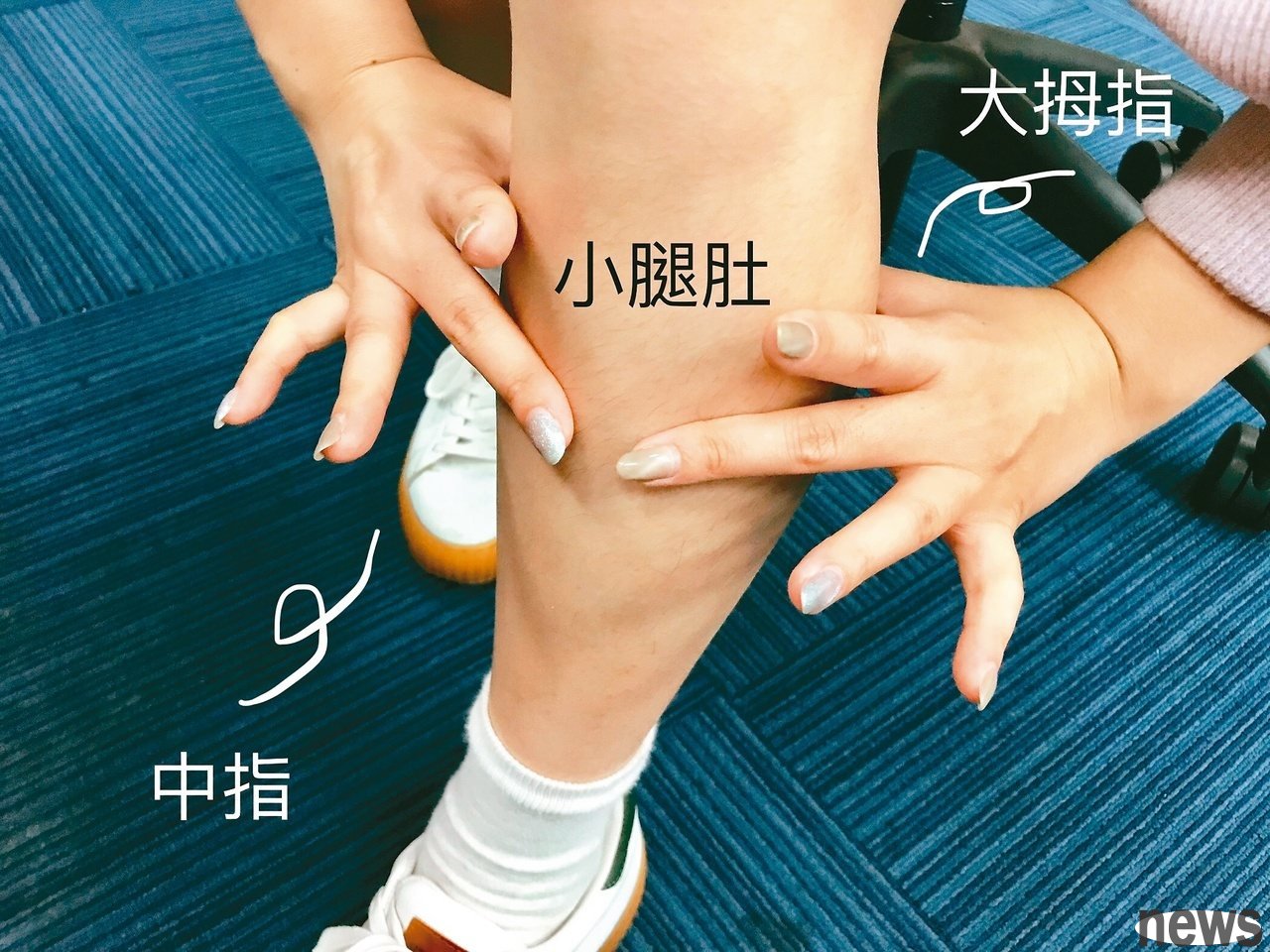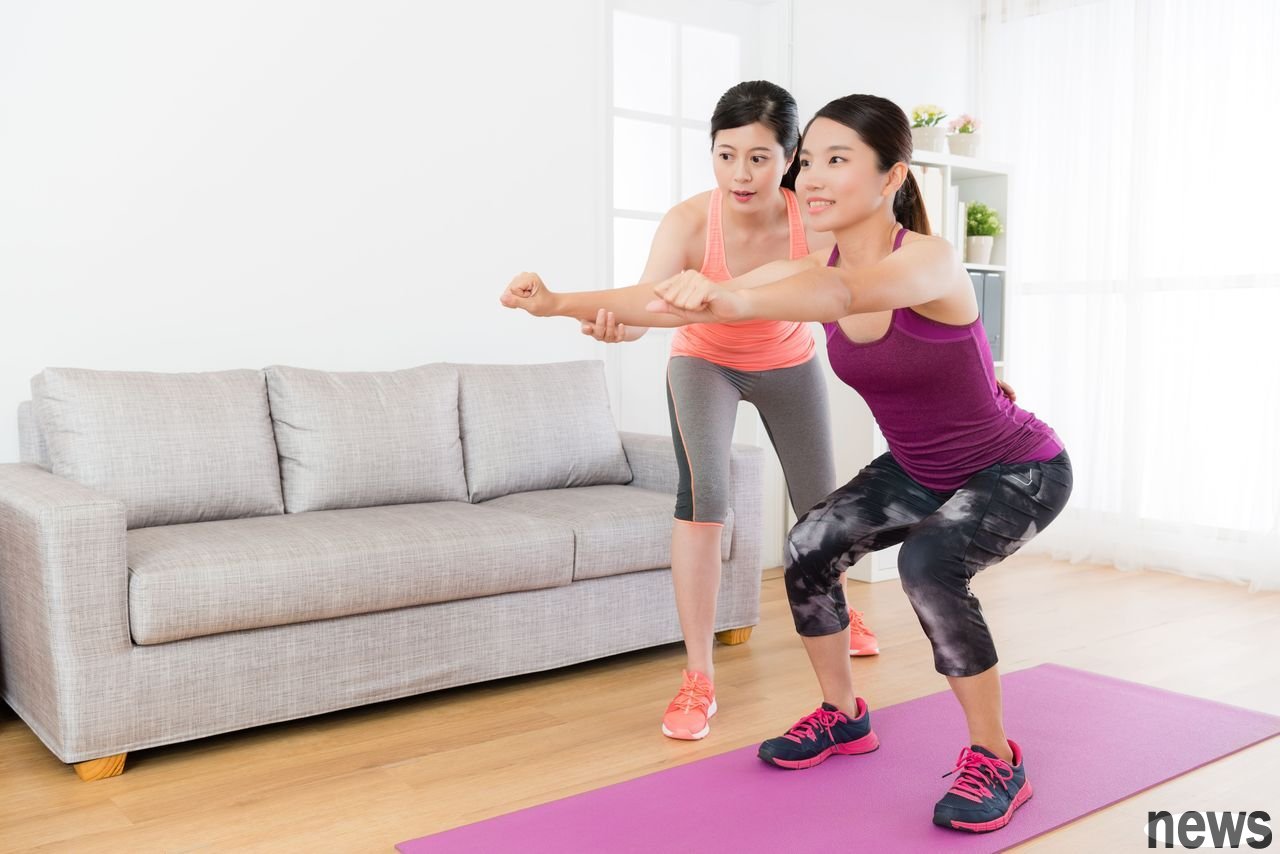● Be careful of sarcopenia, and you can use double-handed testing to determine the initial diagnosis of calf. If the calf muscle mass is insufficient, the bones will become loose, and the risk of falling and fractures is high. The risk of falling an...

● Be careful of sarcopenia, and you can use double-handed testing to determine the initial diagnosis of calf. If the calf muscle mass is insufficient, the bones will become loose, and the risk of falling and fractures is high. The risk of falling and fractures is high.
● Strengthen muscle strength, squat and exercise every day, supplement sufficient protein, and strengthen the calves with too fine calves, be careful of "sarcopenia" on the upper body! Experts suggest measuring the calf with the middle finger and thumb of both hands. If it can be completely closed, it may suffer from sarcopenia, insufficient body muscle mass, loose bone quality, and easy falls, fractures, etc., which will affect daily life.
The muscle strength can support the standingThe calf muscle is one of the most obvious parts of muscle consumption in the long person. It can determine whether the body's muscle mass is insufficient and is also one of the important indicators for sarcopenia. Ja Shuli, acting director of the Ministry of Health and Welfare, pointed out that muscles are needed to chew, chew, and walk. If the muscle mass is sufficient, it can support the bones and stand. If the legs are too thin and the muscle mass is insufficient, it is most afraid of falling and fractures, which can easily lead to other diseases.
Want to know if there is sarcopenia, Li Xinting, a nutritionist at the Community Nutrition Promotion Center of Huali County Health Bureau, pointed out that you can easily test the calf with both hands, sit down first, and then circle the middle finger and thumb of your own hands, and put it on the calf. If you can completely hold it, you will be a high-risk group of "sarcopenia".
White Hehe Hospital Vice President Liu Fenghong reminds that the proportion of each person's fingers to the calf is different. Do not use other people's double hands to measure. If you want to measure with a tape measure, the length of the middle finger and thumb should also be based on the length of the middle finger and thumb.
Training muscle strength starts from exerciseLi Xinting pointed out that many elderly people are afraid of having three highs and chronic diseases, so they have changed their diet when they are young and think that they should "eat less meat and eat more vegetables". However, if they do not eat meat, they will easily get hungry and eat more food, which will lead to a relatively small amount of protein intake and are prone to sarcopenia. Elderly people often feel weak in body and mental insecurity, which affects daily life.
If you want to increase muscle mass, you can start to improve it from exercise. The stimulus is strongly adjusted. Resistance exercise can train muscles. Elevators should do it often. It is recommended that you can squat 30 times a day, which can start from 10 times. You can accumulate in segments without having to do 30 times a day. After you do not feel that you have to pay, you can increase the daily training volume. Each time you adjust the increase by 10 times a day. For example, squat 40 times a day, and then slowly adjust it to 50 times a day, so as to promote this type.
Invigorate protein foodsThe dietary part for muscle-building, Liu Fenghong said that the protein absorption rate of the elderly is poor and the consumption rate is higher. It is necessary to consume more protein foods. It is recommended to eat more fish, chicken, beans, eggs and milk. Men recommend taking 10 parts of protein a day, and 8 parts for women, such as about 1 part of an egg and about 6 parts of the palm-sized meat.
How to do squats?The basic squat is to stand naturally, with both feet as wide as shoulders, and the tip of the foot should be facing forward. When squatting, keep the back straight, that is, the upper body is forward and the hips are sitting back. When squatting, the knees should not exceed the tip of the foot. However, because each person's physical energy is different, the body's softness is also different. Adjust the angle at the right time and squat down step by step. Remember that the double foot must be stable and cannot leave the ground.
Squat until your thighs are parallel to the ground, so that the inner ridge angle of the knees is 90 degrees. At the same time, both hands stretch forward and straighten the flat side, so that the center of gravity is placed on the back foot instead of the front foot. At this time, the thighs are parallel to the ground, and the back of the upper body remains straight.
